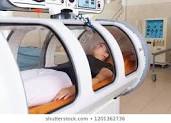- You are here:
- Home »
- Blog »
- non-conventional therapies »
- Early Stage Myeloma IgA Kappa Diagnosis- Therapy Plan?
Early Stage Myeloma IgA Kappa Diagnosis- Therapy Plan?

“…those therapies that research has shown can treat your early stage multiple myeloma in combination with low-dose conventional therapies.”
Hi David- I was diagnosed with early stage Multiple Myeloma on last month. I have a IgA Kappa MM;
- M-Spike of 1.2,
- IgA 1,361.
 I’m following an integrative protocol with the Mederi Center, Oregon. I’m also adding some non-conventional therapies to my regime such as HyperBaric Oxygen Therapy (HBOT) weekly.
I’m following an integrative protocol with the Mederi Center, Oregon. I’m also adding some non-conventional therapies to my regime such as HyperBaric Oxygen Therapy (HBOT) weekly.I have delayed conventional treatments until I can review my treatment options and I’m getting a second opinion with Dr James Berenson next week.
My oncologist at Stanford will be reviewing my case in October. I would value your opinion on the most effective adjunct therapies to use until then –
- HBOT,
- Intravenous Vitamin C,
- ozone therapy or
- hyperthermia.
Thank you, Joan
Hi Joan,
- Hyperbaric oxygen therapy
- Intravenous vitamin C therapy
- Ozone therapy
- Hyperthermia-
- I have found studies that cite IVC as being cytotoxic to MM. IVC is non-toxic, anti-MM and will “pre-habilitate” you. All good.
- I have not found studies that cite HBOT as being anti-MM. I underwent HBOT myself for nerve damage but I cannot recommend it as a MM therapy simply because I can’t find studies that support this idea.
- Same for ozone therapy.
- Whole body hyperthermia- I think WBH is a cancer therapy in general but I cannot say it is a MM therapy. For the record, I sauna several times a week (pre-Covid anyway…).
- Curcumin
- Resveratrol
- Omega-3 fatty acids
- Green Tea Extract (EGCG)
- CBD oil- high percentage of cannabinoids
- MM Survivor
- MM Cancer Coach
- Director PeopleBeatingCancer
Recommended Reading:
- Multiple Myeloma Chemotherapy, Allergy, Hypersensitivity, Side Effects?
- Multiple Myeloma Prognosis- Conventional, Integrative, Complementary Therapy
- Multiple Myeloma Chemotherapy- Proteasome Inhibitors
Hyperthermia in Cancer Treatment
“How is hyperthermia used to treat cancer?
Hyperthermia is almost always used with other forms of cancer therapy, such as radiation therapy and chemotherapy (1, 3). Hyperthermia may make some cancer cells more sensitive to radiation or harm other cancer cells that radiation cannot damage. When hyperthermia and radiation therapy are combined, they are often given within an hour of each other. Hyperthermia can also enhance the effects of certain anticancer drugs…
What are the different methods of hyperthermia?
Several methods of hyperthermia are currently under study, including local, regional, and whole-body hyperthermia (1, 3–9)…
- Whole-body hyperthermia is used to treat metastatic cancer that has spread throughout the body. This can be accomplished by several techniques that raise the body temperature to 107-108°F, including the use of thermal chambers (similar to large incubators) or hot water blankets.
The effectiveness of hyperthermia treatment is related to the temperature achieved during the treatment, as well as the length of treatment and cell and tissue characteristics (1, 2). To ensure that the desired temperature is reached, but not exceeded, the temperature of the tumor and surrounding tissue is monitored throughout hyperthermia treatment (3, 5, 7). Using local anesthesia, the doctor inserts small needles or tubes with tiny thermometers into the treatment area to monitor the temperature. Imaging techniques, such as CT (computed tomography), may be used to make sure the probes are properly positioned (5)…”
Multiple Myeloma Tumor Cells are Selectively Killed by Pharmacologically-dosed Ascorbic Acid
Highlights
- •Pharmacologically-dosed ascorbic acid kills Multiple Myeloma cells.
- •Pharmacologically-dosed ascorbic leads to apoptosis-inducing factor 1 cleavage.
- •Pharmacologically-dosed ascorbic lowers melphalan dosage.
Multiple myeloma (MM) remains a difficult to cure disease in the majority of cases. Several preclinical and clinical studies have shown that ascorbic acid in pharmacologic doses (PAA) selectively kills cancer cells, while sparing normal cells. This article reveals the biological mechanism by which PAA exerts its anti-cancer effects and should lead to the development of an innovative therapy in MM.
Hyperbaric Oxygen Therapy
“Hyperbaric medicine is medical treatment in which an ambient pressure greater than sea level atmospheric pressure is a necessary component. The treatment comprises hyperbaric oxygen therapy (HBOT), the medical use of oxygen at an ambient pressure higher than atmospheric pressure, and therapeutic recompression for decompression illness, intended to reduce the injurious effects of systemic gas bubbles by physically reducing their size and providing improved conditions for elimination of bubbles and excess dissolved gas…
Radiation injury[edit]
There is some evidence that HBOT is effective for late radiation tissue injury of bone and soft tissues of the head and neck. Some people with radiation injuries of the head, neck or bowel show an improvement in quality of life. Importantly, no such effect has been found in neurological tissues. The use of HBOT may be justified to selected patients and tissues, but further research is required to establish the best people to treat and timing of any HBO therapy.[52]
Neuro-rehabilitation[edit]
As of 2012, there is insufficient evidence to support using hyperbaric oxygen therapy to treat people who have traumatic brain injuries.[53] In stroke, HBOT does not show benefit.[54][46] HBOT in multiple sclerosis has not shown benefit and routine use is not recommended.[45][55]
A 2007 review of HBOT in cerebral palsy found no difference compared to the control group.[56][57] Neuropsychological tests also showed no difference between HBOT and room air and based on caregiver report, those who received room air had significantly better mobility and social functioning.[56][57] Children receiving HBOT were reported to experience seizures and the need for tympanostomy tubes to equalize ear pressure, though the incidence was not clear.[56]
Cancer[edit]
In alternative medicine, hyperbaric medicine has been promoted as a treatment for cancer. A 2012 review article in the journal, Targeted Oncology, reports that “there is no evidence indicating that HBO neither acts as a stimulator of tumor growth nor as an enhancer of recurrence. On the other hand, there is evidence that implies that HBO might have tumor-inhibitory effects in certain cancer subtypes, and we thus strongly believe that we need to expand our knowledge on the effect and the mechanisms behind tumor oxygenation.”[58] However, a 2011 study by the American Cancer Society reported no evidence it is effective for this purpose.[59]…”


